As a jewelry designer, selecting top quality gems, cabochons and beads for jewelry designs is an exciting process. I often talk with the “middle men”, the vendors who obtain these beautiful components. But I also have reverence for all those who have mined, sorted, cleaned, rough cut and then polished exquisite gemstones before I select them for a design.
I have often thought that to be “authentic” (a descriptor for my favorite people), one must walk the talk. To really understand the journey and history of any gemstone, a designer should at least once, search for gemstones in dusty places, cut with diamond saws, and use lapidary polishing equipment to get a behind the scenes look at what it takes to produce jewelry-ready gemstones.
I have been attending a lapidary seminar to extend my “front line” knowledge of this part of the jewelry world. Last night involved cutting and polishing a “Thunder Egg”. Though I will not be able to use this stone for jewelry, I enjoyed the opportunity to tap into my natural “roots”, even though I am an urban dweller.
Because it is such a delightful story, here is how the famous “Thunder Eggs” of Oregon came into being. According to ancient Native American legend, when the Thunder Spirits living in the highest recesses of snowcapped Mount Hood and Mount Jefferson became angry with one another, amid violent thunder and lightning storms they would hurl masses of these spherical rocks at each other. The hostile gods obtained these weapons by stealing eggs from the Thunderbirds' nests, thus the source of the name "Thundereggs."
A Thunder Egg is like a filled geode, the outside is often Rhyolite and the inside an Agate. Well this week Thunder Eggs, maybe next week I will move on to Amazonite, Labradorite, or even Amethyst. Though my primary work is design and fabrication of silver which incorporates gemstones, I am thoroughly enjoying this trip behind the scenes.
Subscribe to:
Post Comments (Atom)
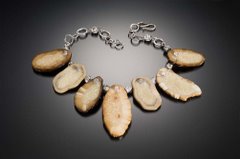
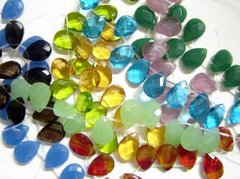
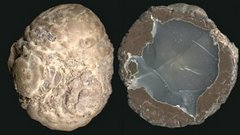
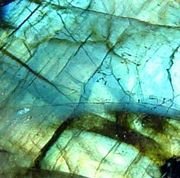
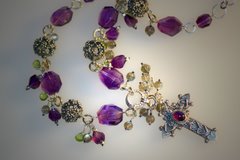
No comments:
Post a Comment